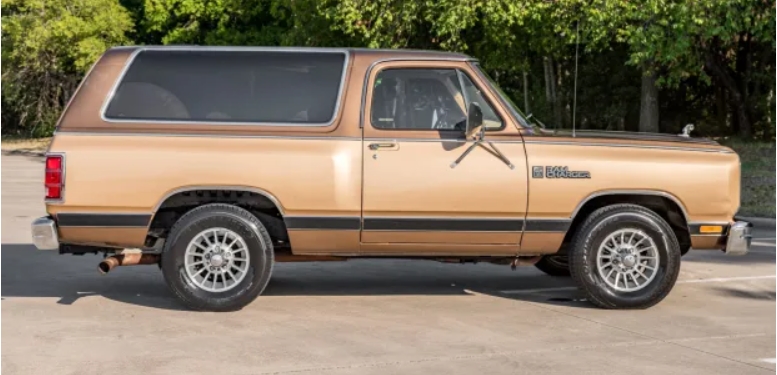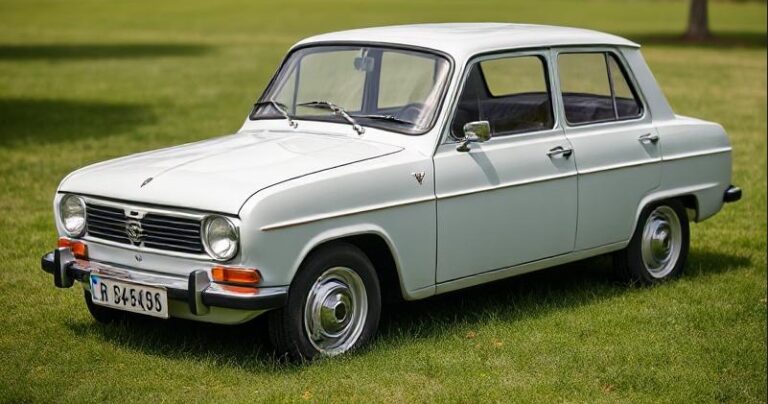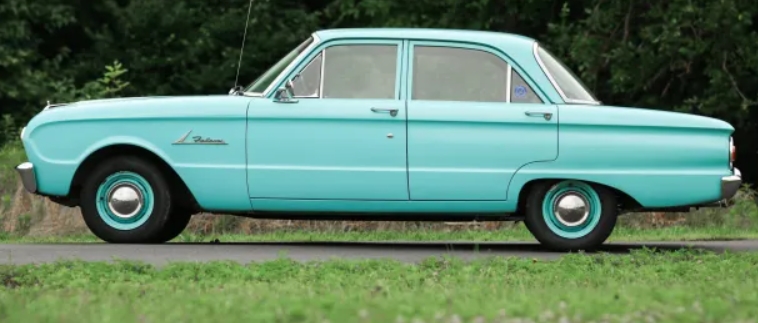The Dodge Ramcharger’s Roar: The Evolution of A Full-Size SUV
The Dodge Ramcharger, a name synonymous with ruggedness and capability, left an indelible mark on the SUV landscape. From its debut as a direct competitor to the Ford Bronco and Chevrolet Blazer, the Ramcharger carved a niche for itself with its bold styling, powerful engine options, and off-road prowess. This article will delve into the history of this iconic vehicle, tracing its evolution through the years, highlighting the different generations, models, and trim levels that defined its character.
The First Generation (1974-1980): The Birth of a Legend
The Ramcharger’s story begins in 1974, a time when the burgeoning SUV market was hungry for options. Dodge, recognizing the potential, introduced the Ramcharger as a two-door, full-size SUV based on the same platform as its D-series pickup trucks. This marked a significant departure from the more car-based SUVs that were emerging at the time. The Ramcharger was built for work and play, embodying the spirit of adventure that characterized the era.
- Production Years: 1974-1980
- Body Style: Two-door SUV
- Key Features:
- Removable fiberglass top for open-air driving (1974-1976)
- Full-length steel roof (1977-1980)
- Solid front and rear axles, providing robust off-road capability.
- Available with both two-wheel-drive and four-wheel-drive configurations.
- Strong engine choices, including the 225 cubic inch (3.7L) Slant-6, and various V8 engines.
Trim Levels (1974-1980):
- Base: The most basic trim level, offering essential features.
- SE (Special Edition): Typically included upgraded interior appointments and cosmetic enhancements.
- Sport: Added sportier styling cues and often came with performance-oriented features.
Engines (1974-1980):
- 225 cu in (3.7L) Slant-6 (1974-1980)
- 318 cu in (5.2L) V8 (1974-1980)
- 360 cu in (5.9L) V8 (1974-1980)
- 400 cu in (6.6L) V8 (1974-1978)
- 440 cu in (7.2L) V8 (1975-1979)
A Period of Growth and Refinement (1974-1980):
The first generation Ramcharger saw a number of incremental changes. The most notable change was the switch from a removable fiberglass top to a full-length steel roof in 1977. This enhanced the Ramcharger’s structural integrity and improved its weather protection. Engine options were also refined throughout the years, with some engines being dropped and others added to meet changing emissions standards and consumer demands. The first generation was marked by its straightforward design and functionality, setting the foundation for future success.
.
Sooo many different paint schemes on these cars! Do you know the differences?
Paint Color Identification Dodge Challenger
.
The Second Generation (1981-1993): A New Look, Continued Legacy
The 1981 model year brought a significant redesign for the Ramcharger, ushering in the second generation. While maintaining the core principles of its predecessor, the Ramcharger adopted a more modern and streamlined aesthetic. It was based on the new Dodge D-series pickup truck, which was redesigned in 1981 as well.
- Production Years: 1981-1993
- Body Style: Two-door SUV
- Key Features:
- Updated styling with a more aerodynamic front end and a sleeker overall profile.
- Continues to offer both two-wheel-drive and four-wheel-drive configurations.
- Stronger engine choices.
- Improved interior with more comfortable seating and modern amenities.
- The discontinuation of the removable top.
Trim Levels (1981-1993):
- Base: The entry-level trim, providing a no-frills approach to SUV ownership.
- Custom: Offered upgraded interior materials and trim.
- SE (Special Edition): Often included added convenience features and cosmetic enhancements.
- Sport: Positioned as the sportiest option, it frequently included performance-oriented upgrades and unique styling elements.
- Royal SE: (1989-1993): This was the highest trim level and featured numerous luxury appointments.
Engines (1981-1993):
- 225 cu in (3.7L) Slant-6 (1981-1987)
- 318 cu in (5.2L) V8 (1981-1993)
- 360 cu in (5.9L) V8 (1981-1993)
- 2.5L I4 (1984-1987) (available only in 2WD models)
A Period of Refinement and Adaptation (1981-1993):
The second generation Ramcharger continued to evolve, with improvements to the engine lineup and interior features throughout its production run. The 2.5L I4 was introduced in 1984, but was only available in 2WD models and was not very popular due to its lack of power in such a heavy vehicle. Throughout the 1980s, the Ramcharger gained popularity with its reliable performance and strong off-road capability, establishing itself as a favorite among those who required a versatile and rugged SUV. The introduction of the Royal SE trim level in 1989, was evidence that Dodge was beginning to understand the value of the luxury SUV market. The second generation cemented the Ramcharger’s reputation as a capable and dependable SUV.
The End of an Era (1994-1996): A Transition and Farewell
In 1994, the Ramcharger, as it was known, was discontinued for the North American market. This was due to a combination of factors, including declining sales, new safety regulations, and changes in consumer demand. Dodge, however, continued to produce the Ramcharger for export markets until 1996, albeit with some alterations. It continued to enjoy strong sales in other regions.
- Production Years (North America): 1994
- Production Years (Export): 1994-1996
- Body Style: Two-door SUV
Trim Levels (1994):
- Base
- SE (Special Edition)
- Sport
Engines (1994):
- 318 cu in (5.2L) V8
- 360 cu in (5.9L) V8
The Legacy of the Ramcharger:
The Dodge Ramcharger, although no longer produced, remains an icon in the world of SUVs. Its rugged design, off-road capability, and powerful engine options made it a favorite among adventurers, outdoor enthusiasts, and those who needed a reliable and versatile vehicle. The Ramcharger’s legacy lives on through the countless examples that still roam the roads and trails, as well as the memories of the generations who experienced its unique blend of power and practicality. It set a benchmark for the full-size SUV market, inspiring other manufacturers to create their own rugged and capable off-road vehicles. The Ramcharger proved that an SUV could be both tough and stylish, creating a template that other manufacturers followed. Even though Dodge did not continue to produce the Ramcharger for very long, it had a big impact on the SUV market. Today, the Dodge Ramcharger is a highly sought-after classic vehicle, and its enduring appeal is a testament to its enduring legacy. The spirit of the Ramcharger is not forgotten.







